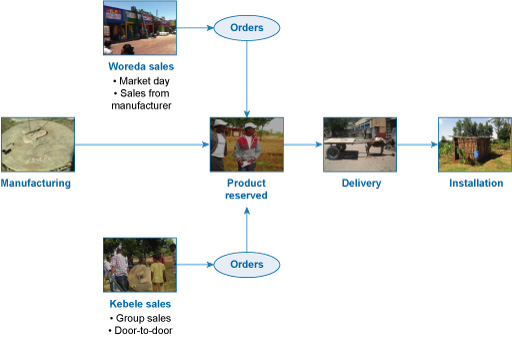13.4.5 Business model for sanitation marketing
Giving due consideration to the 4 Ps can lead to the development of a successful business model, like the one shown in Figure 13.5. This model shows the steps in the supply process from manufacture to installation. Three main stakeholders are involved: the producer; the sales agent; and the customer.
The producer is responsible for manufacturing the item (for example, a latrine slab) and giving information to customers on its installation. Some sales at woreda level are made directly from the manufacturer or by orders placed at a market.
At kebele level, sales agents are recruited from the local community. People who are respected are selected from each kebele and trained on the importance of sanitation products and how to communicate this to potential customers. The sales agents engage in sales activities at the community and household level with prior introduction by the local kebele head or Health Extension Worker. When they make a sale, the agents receive the initial deposit from customers and retain their commission from the deposit. They then deliver the order and give the balance of payment to the producers.
This model was used in a pilot study in two woredas in the Tigray Region and it was found that leaflets and posters (such as the one shown earlier in Figure 13.4) distributed to every block of kebeles and the main gates of condominiums were effective in promoting the scheme.
13.4.4 Pricing of sanitation products and services

